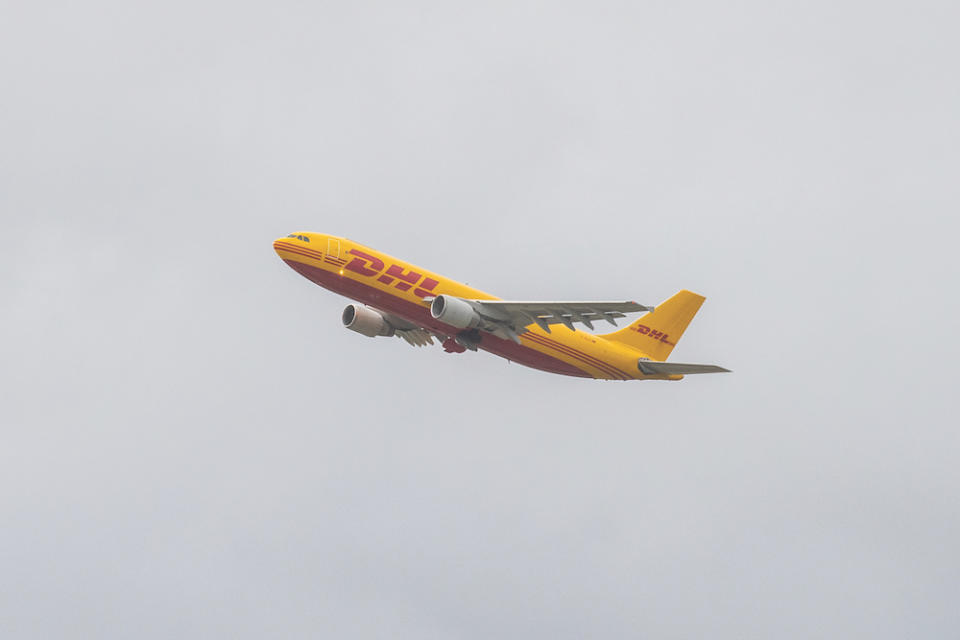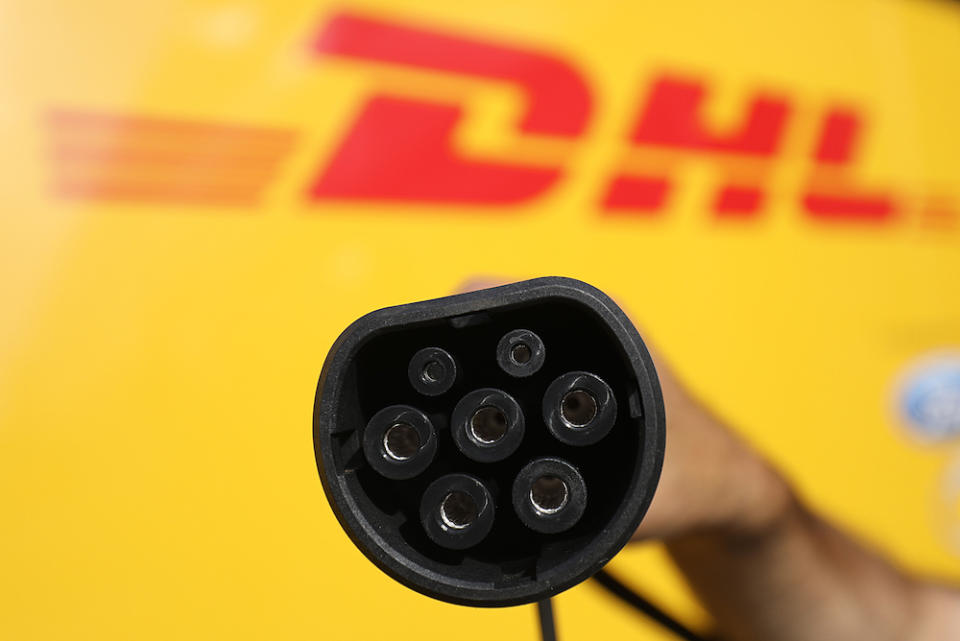Tackling Emissions, Whether it Floats, Flies or Drives

Trains, planes and automobiles are massive contributors to global emissions, but the transportation logistics sector is attempting to reframe that narrative.
With billions of tons of cargo ferried across the globe each year, freight transportation accounts for 8 percent of global greenhouse gas (GHG) emissions—and up to 11 percent if warehouses and ports are added to the mix, according to the Massachusetts Institute of Technology (MIT) Sustainable Supply Chains Initiative. By 2050, the growth of Asian, African and Latin American economies are projected to triple global demand for freight, doubling the sector’s GHG footprint in the process. “If we continue with business as usual, freight will become the highest emitting sector by 2050,” program manager Suzanne Greene wrote.
More from Sourcing Journal
Almost 75 percent of cargo is moved via ocean freight vessels, as their size and capacity make them the most efficient way to move containers of products across the globe. Leaders in ocean freight are becoming increasingly bullish about mitigating their environmental impact. In December, the chief executives of five of the globe’s most prominent shipping lines—Maersk, CMA CGM, Hapag-Lloyd, Mediterranean Shipping Company and Wallenius Wilhelmsen—issued a joint declaration at COP28 in Dubai demanding stronger climate action from the International Maritime Organization (IMO) in the form of a firm cutoff date for the construction of new vessels powered exclusively by fossil fuels. They also asked the agency, established by the United Nations, to establish new regulations that will speed up the shipping industry’s green fuel transition, like new GHG pricing mechanism to make fuels like methanol and ammonia competitive with traditional fossil fuels as the industry undergoes its transition.
With the shipping sector lagging on its decarbonization commitments, like transitioning 5 percent of shipping fuels used internationally to zero-emission options by 2030, shippers like Maersk are attempting to pull their weight by setting more ambitious targets. The Danish logistics firm aims to switch a minimum of 25 percent of its cargo transport to green fuel within the same timeframe, and launched its first green methanol-powered ship last fall, with 24 more vessels to be delivered by 2027. Maersk’s Eco Delivery Ocean offering, powered by carbon-neutral biofuel made from recycled biomass—favored by firms like Inditex, Amazon, H&M and Bestseller—allows for the shipment of goods at a fixed cost, with GHG savings confirmed by a third-party-verified certificate.
CMA CGM aims to zero out its emissions by 2050, and has funneled around $15 billion into decarbonizing its fleet with the goal of amassing 120 vessels capable of being powered by green fuels in the next four years. Last year, the French shipper slashed CO2 output by about 1 million tons. Meanwhile, MSC will renew its fleet with 100 dual-fuel vessels as it reaches for a 2050 net-zero target.

DHL Express is also updating its air fleet, retiring older planes and replacing them with more efficient models. Photo:Marcos del Mazo/LightRocket via Getty Images.
DHL Express U.S. CEO Greg Hewitt said the logistics provider’s most recent research shows that “environmental sustainability is at the top of everyone’s agenda,” including the firm’s clients and their consumers. “We found that decarbonization and alternative energy solutions are some of the top trends that will have the biggest impact in transforming logistics” in 2024.
With the skyrocketing growth of e-commerce and the convenience of home delivery, demand for road transport is on the rise as well, contributing to 80 percent of the global increase in diesel consumption, according to MIT data. Hauling goods by truck can emit more than 100 times as much CO2 as sailing ships the same distance and with the same volume of cargo, and road vehicles make up the bulk (65 percent) of freight emissions.

As such, “the electrification of our fleet, here in the U.S. and in other parts of the world, has been a great priority for us,” Hewitt said. DHL Express has been “aggressively” ditching fuel-based vehicles in favor of an electrified last-mile fleet, as well as long-haul trucks. “Our goal is to electrify 60 percent of our last-mile delivery vehicles by 2030,” amounting to more than 80,000 electric vehicles on the road, Hewitt said. Today, DHL Express has over 28,000 electric vehicles operating worldwide, including 400 stateside and about 200 more on order. The firm has invested $30 million in electric vehicles in the U.S. over the past five years, he said.
Aviation, however, is the largest source of GHG emissions in the firm’s global business, which spans 220 countries and territories. DHL Express has been investing in sustainable aviation fuels (SAF) since 2022, when it committed to purchasing over 800 million liters from BP and Neste. The deal sought to drive demand to support SAF production while offering a greener option to customers, Hewitt said. Introductions of SAF in DHL Express networks in San Francisco (SFO), East Midlands (EMA) and Amsterdam (AMS), will help the company fly over the halfway mark in its goal to reach 10-percent SAF blending for all air transport by 2026.
“DHL expects to save approximately 2 million tons of carbon dioxide emissions over the aviation fuel lifecycle—equivalent to the annual greenhouse gas emissions of approximately 400,000 passenger cars,” Hewitt said. Months ago, the group inked a seven-year agreement with World Energy to purchase 668 million liters of SAF with sustainable aviation fuel certificates—”one of the longest and largest SAF agreements in the aviation industry to date.”
DHL Express is also updating its air fleet, retiring older planes and replacing them with more efficient models like Boeing 777s. In 2024, it’s expecting the first delivery of nine Mammoth-converted B777 freighters, adding to an existing fleet of 28 Boeing B777-200F freighters from Boeing purchased over the past few years.
“Ordering converted freighters with a shorter useful life provides an efficient bridge between current and new airframe technologies,” Hewitt said. “Electric planes are another technology that we are very excited about—so much so that we already ordered up to 12 fully-electric cargo planes from Eviation, which are expected to start entering our fleet in 2027.” The biggest challenge when it comes to conversion is “availability and supply” of newer, better planes.
There’s no “silver bullet” to cutting emissions within the supply chain, Tim Robertson, Americas CEO of DHL Global Forwarding, said—instead, shippers need to employ a “holistic approach” that allows them to address several areas at once. “Obviously, Scope 3 emissions are a major contributor to the carbon footprint of many companies, so carrier selection is critical within the freight forwarding industry,” he said.
DHL Global employs a carrier certification program for air and ocean freight, which ranks suppliers based on various environmental criteria and helps support the firm’s decision-making on awarding business. The company consults on routing changes and consolidation that optimizes emissions output and often reduces costs, Robertson said.
“An important factor in our discussions with customers is that we are encouraging them to budget separately for green transportation investments, to avoid making unfavorable comparisons at a unit level in their procurement processes,” he explained. Incorporating sustainable fuels into a supply chain, for example, can still come at a cost premium, given limited production and supply in the market. “But by looking at how this translates into their output—such as how many additional cents per item your end consumers are willing to pay for an alternative green product—and not at the increased cost per unit on the input side, supply chain managers can build a stronger investment case that will help them achieve their own zero emission commitments.”
Bringing down emissions from transportation logistics is a key element in many companies’ sustainability strategies moving into 2024, according to VesselBot CEO Constantine Komodromos. The technology firm, which launched in 2015 as a digital solution for chartering maritime transport, has pivoted as shippers increasingly turn their attention to mitigating Scope 3 emissions across all modes of shipping, from vessels to airplanes, trains and trucks.
VesselBot pulls and harmonizes data from shippers’ own ERP, transportation and order systems while also amassing insights from third parties like freight forwarders, ELD providers and telematics systems for truck fleets, satellite signals from vessels and weather data. “We’ve got a system where a shipper can come to us and give us a port pairing and dates, and ask us, ‘What are the carriers I can use to carry this cargo?’” Komodromos explained. “We will revert back with all carriers and carrier schedules that can satisfy them, ranking them in emissions intensity and ETA.”
The pace at which carriers are upgrading or the manner in which they are maintaining their vessels, planes or trucks plays a role in emissions intensity. The way they are allocating space, or the utilization rate of their shipments, also contributes to or lessens their ultimate emissions output. Distinct modes of transport generate different levels of carbon and GHG emissions, but for many businesses, a combination of air, land and ocean carriers is necessary to business function. Rather than focusing on shifting cargo between these modes, Komodromos said the technology can help shippers optimize carrier selection based on speed, efficiency and environmental impact.

This article ran in Sourcing Journal’s Logistics Report. To read the full report, click here.

